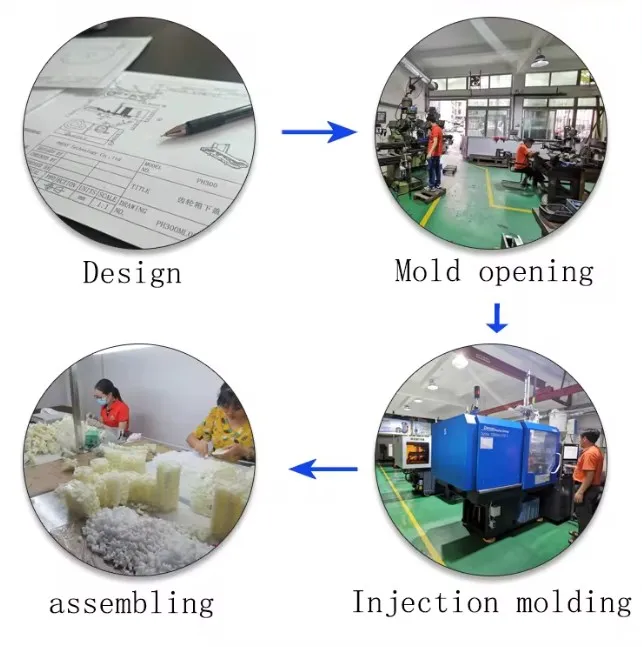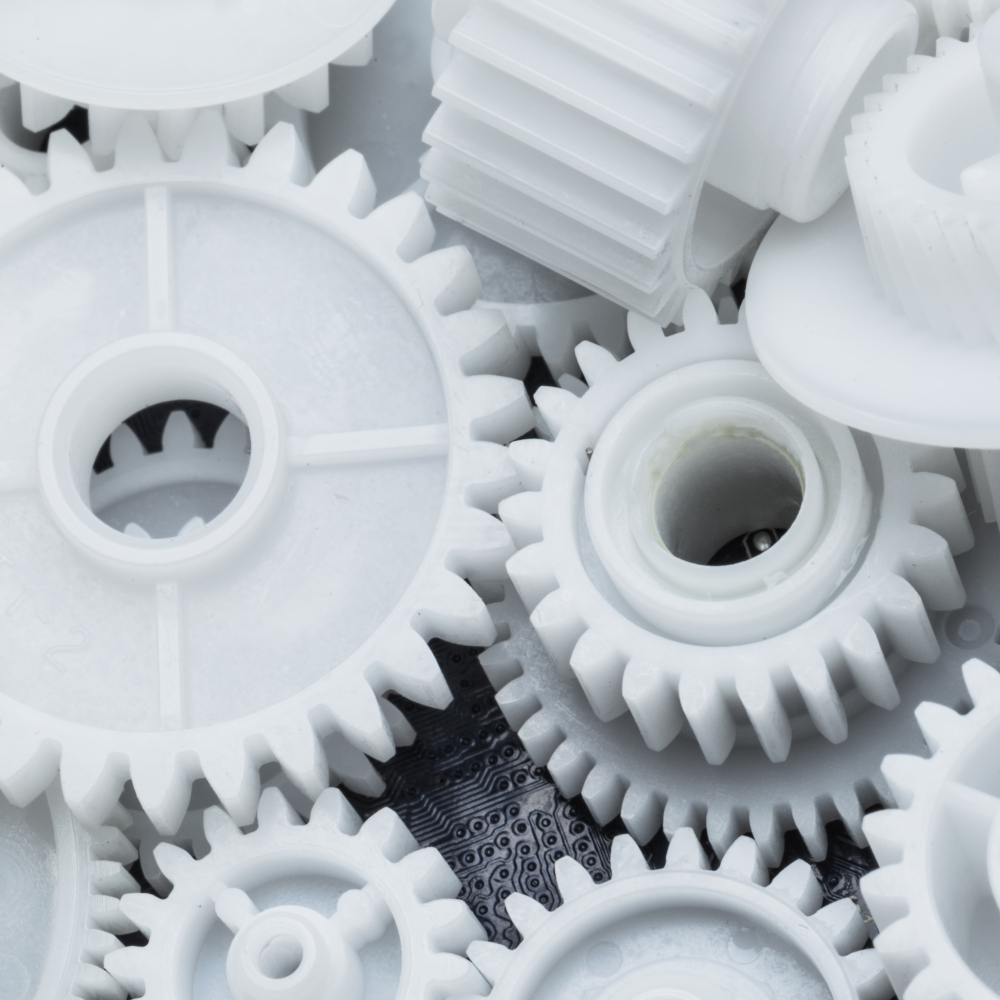Plastic Gear for Consumer Products
Plastic gear is a vital component in various consumer products. Plastic gears are made from different polymer materials such as acetal, nylon, and PEEK (polyether ether ketone). The use of plastic gears in consumer products has been increasing due to their beneficial characteristics. These characteristics include wear resistance, low friction, and high-temperature resistance. Moreover, plastic gears are more cost-effective than metal gears, making them a popular choice for consumer products.
Plastic Gear for Consumer Products and Commercial Use
Plastic gear for consumer products and commercial use has a significant difference in terms of durability and performance. Plastic gears used in consumer products are designed to be used in less demanding applications, while industrial applications require more durable plastic gears. Commercial plastic gears are reinforced with materials such as carbon fibers, glass fibers, and graphite to enhance their mechanical properties and withstand high-torque applications.

Plastic Gear Performance Characteristics
- Wear Resistance: Plastic gears have excellent wear resistance, which means they can withstand wear and tear for longer periods than metal gears.
- Low Friction: Plastic gears have a low coefficient of friction, which reduces energy consumption and increases efficiency.
- High-Temperature Resistance: Plastic gears can operate in high-temperature environments without compromising their performance.
- Noise Reduction: Plastic gears produce less noise than metal gears, which makes them a popular choice in consumer products.
- Lightweight: Plastic gears are lightweight, making them easy to handle and install.
Types of Plastic Gear and their Characteristics
There are different types of plastic gears available, and each type has its unique characteristics. The most common types of plastic gears include acetal gears, nylon gears, and polycarbonate gears.

- Acetal Gears: Acetal gears are known for their tensile strength, high stiffness, and dimensional stability. They are best suited for low to moderate load applications.
- Nylon Gears: Nylon gears are widely used in consumer products due to their excellent mechanical properties, including high impact resistance and fatigue endurance.
- Polycarbonate Gears: Polycarbonate gears are heat-resistant, making them ideal for high-temperature applications. They are also known for their excellent impact strength and stiffness.
Applications of Plastic Gear in Different Industries
Plastic gears have various applications in different industries. Here are some of their applications:
Automotive Industry
Plastic gears are used in different automotive systems such as power windows, windshield wipers, and door locks. Plastic gears are also used in steering systems, transmissions, and engine components. The use of plastic gears in the automotive industry reduces weight and enhances fuel efficiency.
Home Appliances
Plastic gears are used in various home appliances such as washing machines, dryers, and refrigerators. The use of plastic gears in home appliances reduces noise, increases durability, and reduces maintenance costs.
Industrial Machinery
Plastic gears are used in different industrial machinery, including pumps, conveyors, and packaging machines. Plastic gears are lightweight and reduce energy consumption, making them ideal for industrial machinery.
Medical Equipment
Plastic gears are used in various medical equipment such as MRI machines, dental drills, and surgical instruments. Plastic gears are biocompatible and can withstand sterilization, making them ideal for medical equipment.
Electronic Products
Plastic gears are used in various electronic products such as printers, scanners, and cameras. The use of plastic gears in electronic products reduces noise and increases durability.
Future Development and Opportunities
The use of plastic gears in various industries is increasing due to their beneficial characteristics. The future development of plastic gears will focus on enhancing their mechanical properties, reducing their production costs, and increasing their durability. The plastic gear market offers significant opportunities for manufacturers to produce innovative plastic gears that meet the increasing demand.

How to Choose the Right Plastic Gear
Choosing the right plastic gear is essential in ensuring optimal performance and reducing maintenance costs. Here are some factors to consider when choosing the right plastic gear:
Clarify Your Needs
You need to be clear about your needs when choosing the right plastic gear. Consider factors such as torque requirements, temperature requirements, and load capacity.
Material Selection
The selection of the right material is essential in ensuring optimal performance and durability. Consider factors such as chemical resistance, wear resistance, and tensile strength when selecting the right material.
Design Optimization
The design of the plastic gear is critical in ensuring optimal performance. Optimize the design by considering factors such as tooth profile, gear ratio, and mounting options.
Supplier and After-Sales Service
Choose a reputable supplier who offers after-sales services such as maintenance and repair. Ensure that the supplier meets quality standards and has a good reputation in the market.
Cost-Effectiveness
Choose a plastic gear that meets your performance requirements while being cost-effective. Consider factors such as production costs, maintenance costs, and energy consumption.
How to Maintain Plastic Gear
Maintaining plastic gear is essential in ensuring optimal performance and reducing maintenance costs. Here are some tips on how to maintain plastic gear:
- Device Regular Inspection: Inspect the device regularly to identify any signs of wear and tear.
- Cleaning and Corrosion Prevention: Clean the plastic gear regularly and prevent corrosion by using anti-corrosion coatings.
- Lubrication and Maintenance: Lubricate and maintain the plastic gear to reduce friction and ensure optimal performance.
- Replace Worn Parts: Replace worn parts to avoid equipment failure and downtime.
- Improvement and Upgrades: Improve and upgrade the plastic gear to enhance its performance and durability.
Why Choose Us
Our company specializes in the production and sale of plastic gear. We offer high-quality plastic gears that meet your performance requirements. Here are some of our product and company advantages:
- Advanced Production Equipment: We use advanced production equipment to ensure the quality of our plastic gears.
- Customized Solutions: We offer customized solutions that meet your specific needs and requirements.
- Competitive Prices: Our plastic gears are cost-effective and offer value for money.
- Quality Control: We have a strict quality control system that ensures the quality of our plastic gears.
- Excellent After-Sales Service: We offer excellent after-sales service to our customers, including maintenance and repair services.

Q&A
Q1: Can plastic gears replace metal gears in all applications?
A1: No, plastic gears have limitations in high-torque and high-load applications that require metal gears’ strength and durability.
Q2: What is the maximum temperature that plastic gears can withstand?
A2: The maximum temperature that plastic gears can withstand depends on the polymer material used. Acetal gears can withstand temperatures up to 180°C, while nylon gears can withstand temperatures up to 120°C.
Q3: Are plastic gears environmentally friendly?
A3: Yes, plastic gears are environmentally friendly as they can be recycled and reused.
Q4: What is the lead time for the production of plastic gears?
A4: The lead time for the production of plastic gears depends on the quantity and complexity of the order. Generally, it takes 2-4 weeks for the production of plastic gears.
Q5: What is the warranty period for plastic gears?
A5: The warranty period for plastic gears depends on the supplier. Our company offers a one-year warranty for all our plastic gears.
Author: Dream





